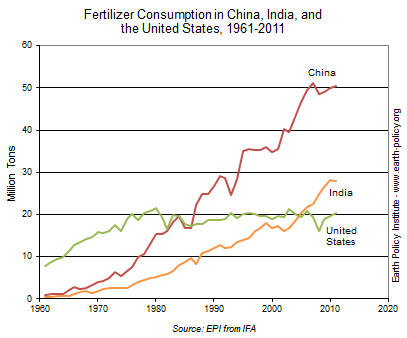-Madhav Gholkar, Nitin Kumbhar and Prithviraj Gaikwad
According to the Gaia theory, earth’s physical and biological processes are linked to form a self-regulating and self-aware system. The regulating processes are often slow and continue over decades or even centuries. With the increasing human interventions; appropriation of most of the natural resources in a hasty manner to fulfill the need and greed of human desires, ultimately causes huge strain on the entire earth’s natural resources and its synergic eco-systems. These man-made interventions force the natural ecosystem to act impetuously to adopt the exterior interference. This is reflecting as increase in temperature, increase in the intensity of heavy storms, flood, longer drought periods, untimely occurrence of rain events etc. All summed as the effect of climate change.
Scientists from different corners of the world echo for the timely need to protect life on planet Earth from possible adverse effects of climate change. As Francis Galton said:
“What nature does blindly, slowly and ruthlessly; man may do providently, quickly and kindly. As it lies within his power, so it becomes his duty to work in that direction.”
India has made a commitment to reduce its carbon footprint, with the ratification of the Paris Climate Change Agreement on 2nd of October 2016. While per capita emissions are only 1/3rd of the global average (WRI, 2014) India is the fourth largest Greenhouse gas emitter in the world. What receives less attention is that the Indian agriculture sector ranks 2nd in contribution of the country’s total greenhouse gas emissions. To meet the demand for food for the growing Indian population, agricultural productivity has to be increased. Uses of chemical fertilizers, high yielding crop varieties and adoption of farm mechanization have proven to be effective ways to increase agricultural productivity (Soni and Ou, 2012). Studies have shown that the excessive use of nitrogen based chemical fertilizers deteriorate the soil health and became the major cause for greenhouse gas emissions (especially N2O) from agricultural soils. Nitrous Oxide (N2O) has a global warming potential 265–298 times that of CO2 for a 100-year timescale (EPA, 2016).


Sustainable agricultural practices could potentially lead to reductions in greenhouse gas emissions from agriculture. There is a pressing need for research that would allow us to quantify greenhouse gas emissions of ongoing agricultural practices to understand its impacts on climate change. In order to address this gap WOTR is undertaking a study together with the International Centre for Tropical Agriculture (CIAT), to assess the impact of various soil conservation practices on Greenhouse Gas (GHG) emissions from agricultural soils. The study area is located in Bhalwani village, near Ahmednagar, Maharashtra. Green gram was selected for the GHG emission study as it is grown by most of farmers in the area. Being a leguminous crop it has the ability to sequester nitrogen from air to soil. Various fertilizer and seed treatment practices were assessed based on the in-situ measurement of GHG emission from farms. In total, 5 fertilizer treatments, 2 seed treatments with 3 replications were considered for the GHG measurement experiment (total 30 plots).
The instrumentation used for the measurement of Greenhouse gases was built in-house with assistance from International Maize and Wheat Improvement Center India (CIMMYT). A low cost static chamber method was used to measure the GHG fluxes from the agricultural field. The gas samples were collected at regular intervals from the experimental plots and further analysis is done by using Gas Chromatography. Along with the GHG sample collection, other weather parameters are recorded from the automated weather station (AWS) installed by WOTR within the vicinity.



The government of India has undertaken various initiatives to reduce greenhouse gas emissions from the different sectors towards mitigating the adverse effects of climate change. Knowledge that triggers the interventions does not go beyond the boundaries of policy makers and scientists. The ongoing experiment is being conducted in a farmer’s field in WOTR’s project village. Here WOTR organizes farmer field schools and exposure visits to the GHG experimental plots and build awareness on the crucial issue of climate change. While the results for the GHG emissions from different agriculture management practices are being analysed in the laboratory, there is a growing awareness among villagers regarding GHG emissions and it’s relation to climate change.
Ramdas Chaudhari who assisted in the field experiments said, “Previously we were oblivious to the causes and reasons of unexpected climatic events, but now WOTR’s team has explained how our actions in the farms and surroundings also contributes to the same.” Devaram Chaudhari and his wife Indubai, owners of the neighboring field said, “We are very interested to know the results of this study, as it will help us to adopt better agriculture practices, which will also reduce input costs while giving higher returns.”
Besides the important contributions to knowledge and policy that we believe this research will make, WOTR’s agriculture team is happy to extend the study beyond the typical boundaries of scientific research towards making the community aware and informed and thus contribute to climate change mitigation measure.
This research work has been supported by the German Federal Ministry for Economic Cooperation and Development (BMZ) under the “One World, No Hunger” Program.
References:
EPA (2016) United States Environmental Protection Agency (https://www.epa.gov/ghgemissions/understanding-global-warming-potentials)
EPI (2014) Earth Policy Institute – Many Countries Reaching Diminishing Returns in Fertilizer Use http://www.earth-policy.org/data_highlights/2014/highlights43
Govt. of India (2012) India’s second national communication to the United Nations framework convention on climate change (unfccc.int/resource/docs/natc/indnc2.pdf)
Soni, P. and Y. Ou (2012) Agricultural Mechanization at a Glance Selected Country Studies in Asia on Agricultural Machinery Development. Centre for Sustainable Agricultural mechanization. (http://www.unapcaem.org/publication/Pub_AM2010.htm)
WRI (2016) World Resource Institute (http://www.wri.org/blog/2014/11/6-graphs-explain-world%E2%80%99s-top-10-emitters)





